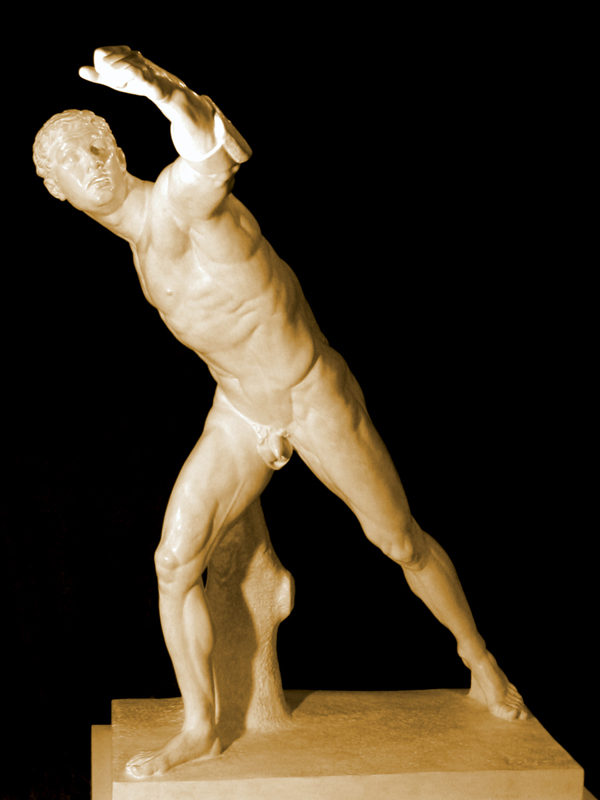Sculpture

Borghese Gladiator or Warrior
Hellenistic
replica: from the Louvre, Paris
bequest of: Edward James Durnin
date of the original: early 1st century BC
provenance of the original: found in AD 1611 at Nettuno, near Anzio, Italy; by AD 1613 in Borghese collection; purchased in AD 1807 by Napoleon
description: Figure of a warrior, plunging forward, left arm extended upwards with remains of shield on forearm. Head facing left, right arm down and behind, hilt of sword in right hand. Greek inscription on trunk. Plaster replica; Pentelic marble original. (Much copied in bronze.) Length head to heel 199 cm, height 163 cm, depth 79 cm.
The Borghese gladiator bears the signature of the little-known sculptor Agasias of Ephesus on the trunk of the tree which supports the figure. The warrior plunges forward, the body straining and stretching, to parry a blow, probably from above, a shield (now missing) on his left arm, a sword (now missing) in his right hand. Viewed from the side, the long, almost too-straight diagonal thrust and the arrangement of torso and limbs seem confined to a one-dimensional frame. But the two-dimensional aspects of the left arm, which leaves the body at a sharp angle, and the right arm pulling the torso in a strong twist, are evident from a frontal view. The muscles and tendons are too abundant and overly defined; this is the late Hellenistic tendency toward hyperrealistic exaggeration of the male figure’s structure (see for comparison: Apollo Lykeios; Hermes and the Infant Dionysus).
The inscription reads “Agasias, son of Dositheos of Ephesus, made (this).”